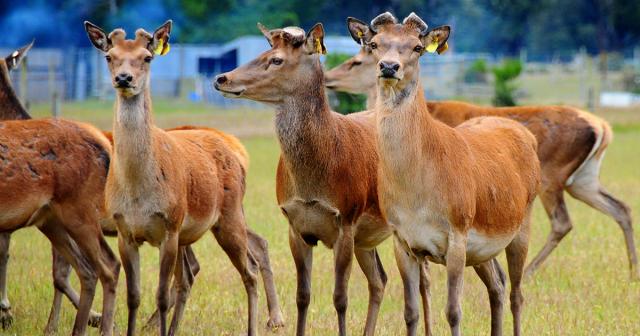Beef + Lamb New Zealand and Deer Industry New Zealand joined forces recently to run a field day highlighting the benefits of running a mix of species within a farm system. Part two of this two part-series covers the opportunities, advantages and challenges of integrating sheep, beef and deer, parasite management and considerations when setting up deer fences.

Key points
- Running a mix of species spreads risk, workloads and provides an alternative income stream
- Four years out of five a hind will produce more than a ewe off the same country.
- Profitability all hinges on efficiency- kilograms of product weaned.
- Deer and lamb breeding and finishing enterprises can be complementary
- Deer, sheep and cattle don’t share the same internal parasites
Integrating stock classes
Speaking at the field day, Hamish Orbell from Clayton Station and Charlie Johns from Coleridge Downs shared their experiences of integrating other classes of stock into their respective farms’ deer units.
Hamish, who runs 1800 breeding hinds (half go to a terminal sire) said for many years they only ran deer in their deer unit, now, with 1600ha of their farm deer fenced, they run both sheep and cattle with deer.
Sheep are used to clean up the hill blocks over winter and some ewes lamb in the deer unit. Cattle are run in the deer blocks all year round.
Charlie says they run 1400 hinds at Coleridge Downs, all of which go to a terminal sire. Some of the pastures in the deer unit are a chicory and red clover mix and these are used for growing out weaner deer in spring and then for lambs, which are finished for Headwaters’ Lumina lamb. This highlights the complementary nature of the two finishing enterprises.
Both Hamish and Tom have had good results from lambing ewes in their deer blocks.
Tom says he has lambed 400 twin-bearing ewes in a deer block and 50–60% of the lambs were killed off their mothers in contrast to the 10–15% sold prime at weaning from the ewe blocks.
“I’m not sure why this is, but it has happened multiple times,” says Tom.
Hamish said he has had similar results.
A suggested reason for these results was that deer don’t preferentially eat clover, leaving more high-quality feed available for ewes and lambs.
“You need to work out the balance with ewes lambing and hinds fawning, but it can work really well if you get the stocking rate right.”
Parasite management
Wormwise programme manager and vet Ginny Dodunski told attendees that the advantage of running three different species of livestock is that they don’t share the same worms.
She said deer are simpler than sheep in terms of parasites. Lungworm is their biggest issue and this primarily affects young deer. However if hinds and stags are put under pressure, they can also be affected by lungworm (deer and cattle lungworms are different).
Comparing sheep and deer, Ginny said farmers can be drenching lambs for several months over summer, whereas young deer require very few drenches, and ideally, adult animals shouldn’t need any.
She says deer metabolise drench differently to sheep and cattle and she urges farmers to use the deer specific drench Cervidae Oral on their young deer.
“If you’re trying to cut corners by using a non-specific deer drench then you will be seriously underdosing your weaners.”
She said whatever system farmers are running, they need to consider a system where adult stock are not drenched.
To achieve this, the focus needs to be on prioritising nutrition and maintaining the body condition of adult stock at optimal levels.
Fencing
All speakers stressed the importance of considering stock flows when setting up deer fences.
Charlie said it was important to take time to think about where the fences will go.
“Planning is the key when putting up new fences and you need to actually look at the site and not just the map.”
On hill country, Tom said it was important to think about ridges for ease of mustering.
“You don’t want to be fighting animals, particularly deer, you want to work with them, not against them.”
Hamish said, for them, laneways were crucial for time and for staff and he felt it was important to ensure holding areas were big enough for deer to run into and stay in.
“It’s about getting the flow right.”
He also urged farmers looking at deer fencing to consider environmental risks, such as waterways and wallows and ensuring they were fenced off.
Wayne said that fawns had a habit of going through wider netting, so particular care should be paid of the quality of the netting particularly around yards and laneways.